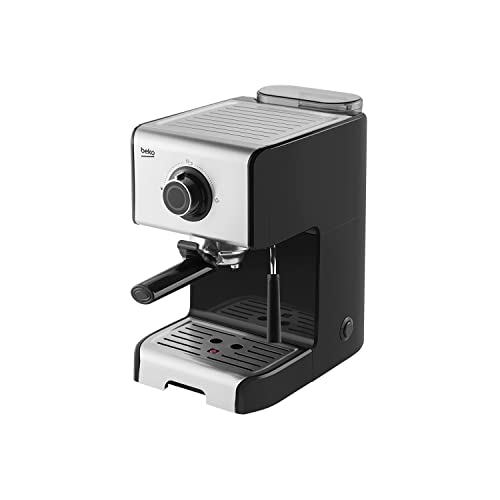Should You Buy an Espresso Machine?
Espresso machines require higher temperatures and pressures than standard coffee makers. They also provide a more concentrated and full-bodied cup of coffee.
Dual boilers are the ideal option, as they allow you to steam milk and make espresso simultaneously. This is an important improvement over most single-boiler espresso machines.
The following are some examples of
Even the most novice of people can now enjoy an excellent shot of espresso. The pressure gauge is a crucial feature that allows you to check the water pressure within the pump when it's operating. This helps to avoid channeling, which can lead to weak shots, and it's found on the higher-end models.
Pre-infusion is yet another important feature. It makes sure that the grounds are completely saturated with water, which is essential to extract the coffee. It's also found on the top-of-the-line machines, and it reduces the risk of burning the coffee.
It is important to think about whether you want to purchase an automatic or semiautomatic machine. Super-automatic machines are completely safe and allow you to make espressos and milk drinks with the touch of a button. However these machines are expensive and might not be to your tastes if you like to play with grinding, tamping or milk steaming.
For a more personal experience, you can opt for a semi-automatic machine that comes with a grinder and bean hopper. These machines have a more traditional look and allow you to manage aspects of the espresso process such as grind settings, strength and temperature. They are available at an affordable price, but they require a little more work from the user.
Cost
There are many options available in selecting an espresso machine. It all depends on the purpose you intend to make use of it and which features are important to you. In general, more features translate to higher costs. You may also want think about whether you would like the ability to begin and stop the brewing process manually or if you prefer a fully automated system.
The most basic home espresso machines come with two ports: a portafilter and a container that is connected manually, and they require regular cleaning of the portafilter and the milk jug. Descaler treatments are usually required every two months to ensure that the machines are in good working order. Some models come with built-in filters which reduce hardness and improve the taste.
Professional espresso machines usually have two boilers, which allow you to steam and brew milk simultaneously. This saves time and effort, and makes sure that each function is heated to the right temperature. A professional espresso maker in your home makes it easy to make delicious cappuccinos and other drinks.

Certain espresso machines come with the option of a manual control for grinder regulation, amount of ground coffee and tampering pressure to give you the feeling of a barista at home. These machines are more expensive than semi-automatic ones but they're a great alternative for those who love the experience of making coffee.
Types
Consider your options carefully before deciding whether to purchase or rent an espresso machine. A lease machine will require less upfront cash, but you'll be bound to an agreement that may increase the cost of maintenance in the future. It will cost more up front but you'll own the equipment completely.
The espresso machine you purchase will depend on your requirements and the kind of coffee you'll serve. The majority of models come with steam wands that heat and froth milk to make cappuccinos or lattes. Many also have a removable dishwasher-safe jug to make large batches of iced drinks or coffee.
There are models that are completely automated that grinds, measures and tamps your beans and uses pre-measured pods for convenience. They usually score the highest in Lab tests for their ease of use, however, they will cost more than a semi-automatic or manual model.
There are single-boiler as well as multi-boiler espresso machines that are more stable in temperature than others, allowing for a consistent flavorful espresso. just click the up coming post are more expensive and take up more space on counters.
Maintenance
Your coffee will taste better if you maintain your espresso machine properly. Regular cleaning and descaling prolongs the lifespan of the espresso machine. Cleaning frequently will also prevent the buildup and deterioration of coffee oils which could affect the flavor.
Giorgio suggests looking for a machine that has an insulated brew group that can be removed and an easy-to-clean drip tray. Giorgio says you'll save time and money by not having to clean the drip tray, and also avoiding the cost of an additional coffee maker.
A high water pressure can also aid in creating an even, rich crema and an even extraction. A quality machine should be able to reach pressure of 9 bars or more.
If you're thinking of buying an espresso maker that is semi-automatic or super-automatic maker, consider how much space you have in your kitchen and whether you'll be plumbing it. If you're limited with cabinet space, think about buying one that is portable or a drip-free version that can be used without being connected to the water line. Additionally, you will be able to avoid the burden of emptying an empty waste container each time you use a drip-free model. You should also make sure that you purchase an espresso machine with a water tank that is easy to fill, remove and clean.
